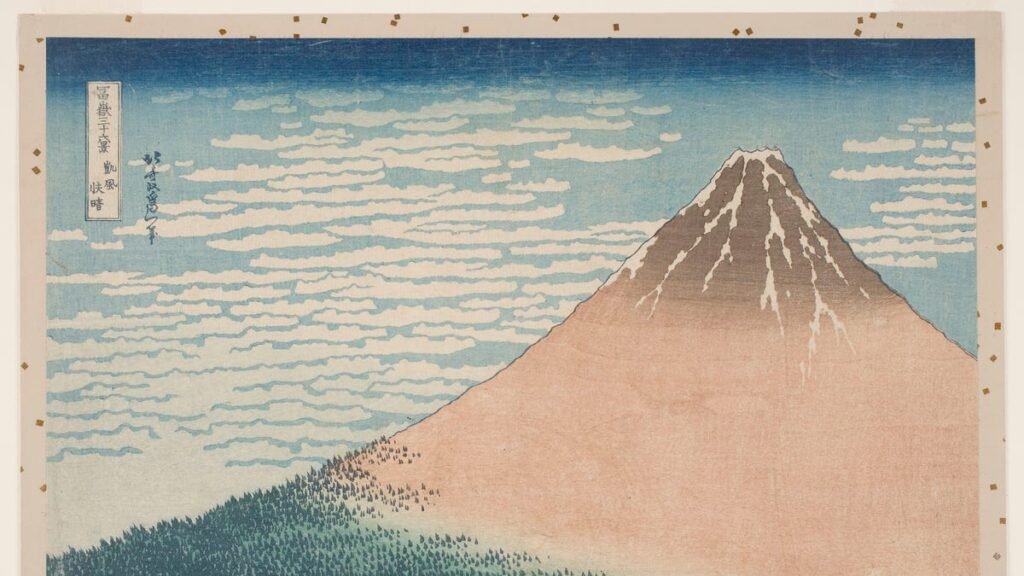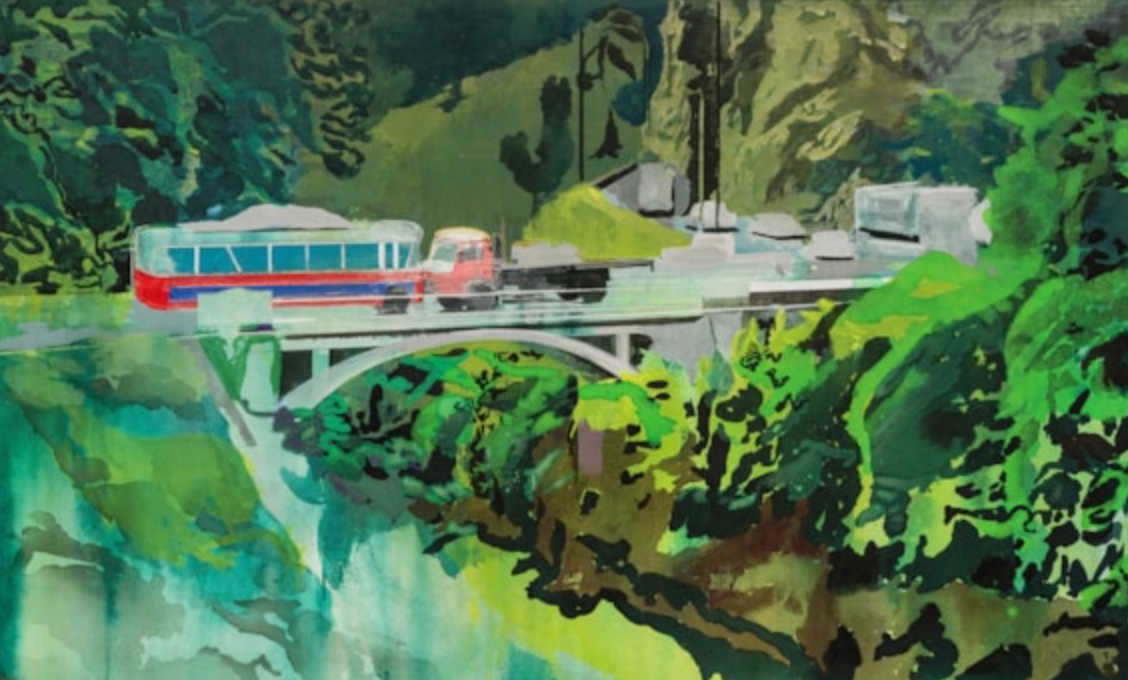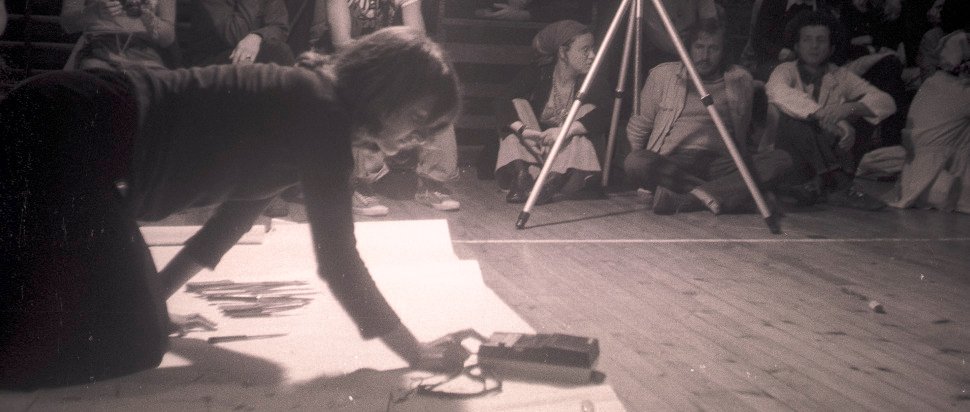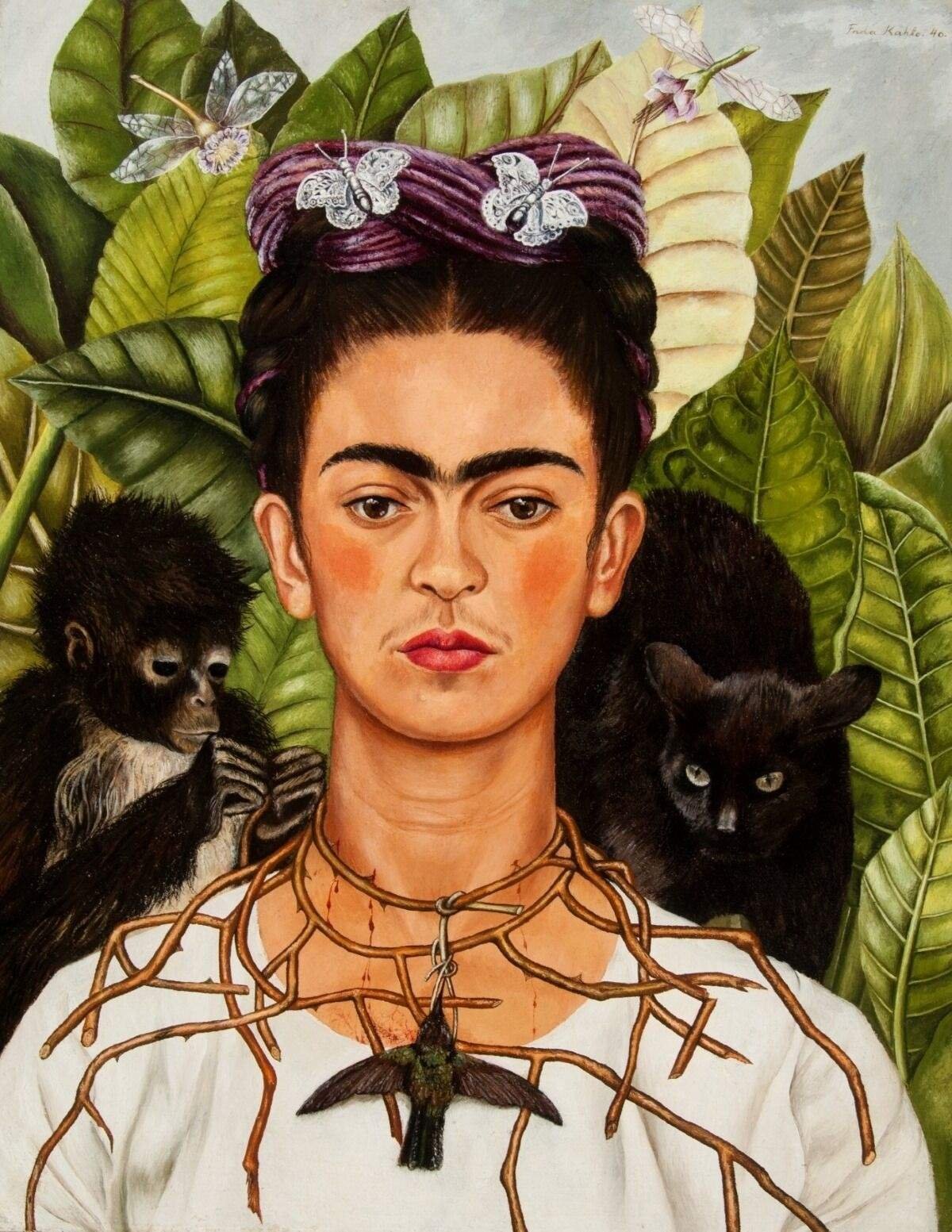Wondering what would make a perfect outing for Asian American Pacific Islander Heritage Month? To start, head to the Blanton Museum of Art on the University of Texas campus for “The Floating World: Masterpieces of Edo Japan from the Worcester Art Museum.”
I’ve listed 10 short reasons why, inspired by a tour of the exquisite exhibit alongside Holly Borham, the museum’s curator of prints, drawings and European art. We chose a Monday, when we had the tall, quiet rooms all to ourselves, because the Blanton is closed on that day of the week.
A wonderland of color
To begin, the gallery walls are not painted the customary white, but rather jade alternating with deep blue. The woodblock prints on paper — created by four-person teams of designers, carvers, printers and publishers — bloom into harmonious arrays of colors, many of them taken from nature. Early local pigments were enriched over time with imported materials, such as Prussian blue, after Japan was opened to trade in the 1850s.
More: Austin concert pianist Anton Nel shopped for prized Austin Symphony Steinway
Sinuous lines
In general, woodblock prints depend on lines cleanly produced through pressure made on carved and inked wood applied to paper, then graced by color gradations that lend the images a painterly effect. The best way to understand this process is to spend time at a demonstration display at the entrance of the four large Blanton galleries, which show how longtime Austin printmaker Daryl Howard goes about those steps. Most of the art in this exhibit is shaped by sinuous lines that bring to life drapery, flowers, whirlpools, people and other forms.
Bounteous nature
The prints in “The Floating World” depict all sorts of scenes, but nature is almost always present, from delicate cherry blossoms that float discreetly above a parade to massive volcanoes — especially sacred, conical Mount Fuji — waterfalls, crashing waves, gardens and wide fertile fields. One of the many ways that curator Borham links Edo Japan (1603-1868) to today’s Austin is our shared love of nature and its constant presence even in the most urban settings.
More: Say yes to everything: From upscale to diners, here’s where to eat and drink in Lubbock
Pleasures of everyday life
For the most part, the Edo Period, named after the Shogun’s capital that became Tokyo, was one of peace and prosperity after a chaotic time of weak emperors and feudal warlords. Japan was almost completely cut off from the rest of the world, but daily life could be quite pleasurable for certain classes of Japanese. Many of these prints depict picnics, festivals, theatrical plays, religious rites, domestic scenes and literary life along with glimpses inside and outside the city’s courtesan districts.
Behind the theatrical scenes
This might not be obvious right away, but Borham points out how many of the prints deal with the private lives of famous actors and courtesans. Given our current sensibilities, this fascination appears to parallel the insistent modern interest in the offstage activities of movie and music stars, as well as fashion models, sports figures and other celebrities, another indication of the historical leisure time afforded this art’s intended audience.
Humorous twists
Again, not always obvious, but several of the artists found humor in children reenacting a warlord’s parade party, or courtesans dressed as classical poets. One convention that artists ignored at their peril was a rule against any parody that depicted rulers of the past. One such image — now at the Blanton — crossed over the line and the artist was jailed.
Myths and literary legends
Museum guests with a knowledge of anime and other Japanese storytelling forms might perk up for some of the mythological creatures depicted here. “The nine-tailed fox still shows up,” Borham says. “As well as all sorts of demons and demon killers.”
More: Justine’s owners will open a café at the Blanton Museum of Art on UT campus in spring 2025
Pictorial travelogues
This I didn’t know: Many of these prints were collected in albums. A popular theme for these publications was travel, since new roads had made tourism possible in Japan. Among the potential subjects: “Thirty-six Views of Mount Fuji” or “One Hundred Famous Views of Edo.” Iconic bridges and trees were also treated in this thematic manner.
Fashion icons of another era
Don’t expect anything like the Met Gala’s wacky line-up of haute couture, but the ensembles worn by some of the figures in this show are undeniably scrumptious. Once again, the Edo Era mirrors our own pop culture which, no matter your previous knowledge of Japanese culture, can only be instructive as well as entertaining.
More: Tour the more than 30 structures lining the ‘Mall of Texas’ Capitol Complex
A rare chance for Austin
I can’t emphasize this enough: Although this exhibit is not considered a blockbuster, it is an extremely rare treat. Put together by the Worcester Art Museum in Massachusetts, it is derived from the estate of businessman John Chandler Bancroft, which donated 3,700 Japanese woodblock prints to the museum in 1901. This collection cannot be matched in Texas today, even at places such as the Crow Museum of Asian Art in Dallas. Nor will it ever, since the days of amassing this particular sort a treasure trove are long over.
Indulge in that pleasure now.
‘The Floating World’
When: 10 a.m.-5 p.m. Tuesday-Friday and Sunday, 10 a.m.-8 p.m. Saturday through June 30
Where: Blanton Museum of Art, 200 E. Martin Luther King Jr. Blvd.
Tickets: $10-$15, free on Tuesdays
Info: blantonmuseum.org






